
Healthy pet rabbits can live for 10–12 years, but sadly many bunnies have a much shorter lifespan due to disease. They thrive on an appropriate, high-fiber diet, as well as a clean living area, a low-stress environment, and plenty of space to exercise. Vaccinations against common fatal illnesses are essential.
Because rabbits are prey animals, they often won’t show symptoms even of serious disease until it is too late, so it‘s worth having a clue what to look out for. This means you can always be alert to the smallest of signs that may indicate something’s amiss, know what’s normal for your bunny, and nip problems in the bud. We also recommend investing in some of the best pet insurance to help offset costs in the event you need to take your bunny to the vet.
Certain illnesses are particularly common in pet rabbits – some are genetic, others contagious; they may be bacterial, viral, parasitic, or due to the environment. Let’s take a look so we can pick up the earliest signals and prompt treatment.
32 common illnesses rabbits can get
1. Malocclusion

Overgrown teeth – often a result of malocclusion – are a common problem in rabbits. Their teeth never stop growing, by 2–3mm every week, and if they are not worn down naturally by chewing and gnawing, this can cause major issues. It is one of the most likely reasons your rabbit will need to see the vet. Dental disease can cause serious pain as the teeth grow into the opposing lips, ulcers can form, and the list goes on. They can suffer anorexia and it can even be fatal if they are unable to chew and swallow.
While overgrown teeth per se are not a disease, malocclusion is typically inherited – when the upper and lower teeth don’t meet properly and therefore don’t wear down correctly, causing overgrowth. Malocclusion can also occur due to a poor diet or a traumatic injury to the mouth.
2. Snuffles

Snuffles is a bacterial upper respiratory infection when the mucous membranes of the air passages and lungs become inflamed. Look out for a watery discharge from the nose and eyes, which may become pus-like. You’ll notice the rabbit coughing and sneezing like anyone with a cold – and it is similarly infectious. Most rabbits should make a full recovery with treatment, but it can take months.
3. Hairballs
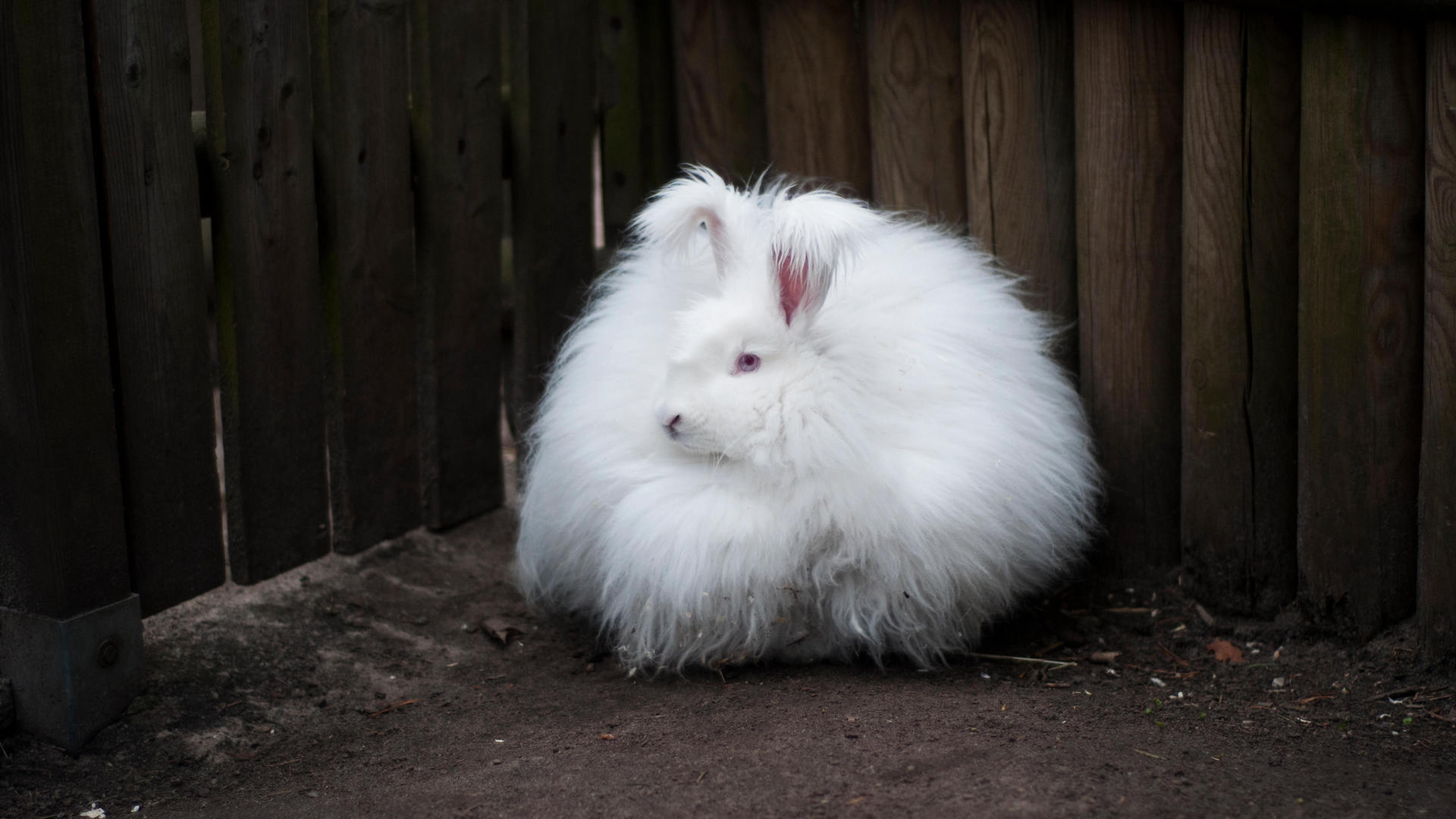
A non-infectious disorder that comes about by the rabbit self-grooming. Usually, the hair they inevitably swallow will pass through the digestive tract, but if they eat a lot – or it builds up in the stomach – it will cause a blockage or hairball. If it truly blocks the gastrointestinal tract, emergency surgery is required to remove it. A high-fiber diet is essential as well as one or two of the best rabbit toys to gnaw on, to prevent excessive hair chewing.
4. Uterine tumors

The most common tumor in rabbits is uterine adenocarcinoma, which is a malignant uterine tumor. Because they are so prevalent, vets tend to recommend spaying rabbits by six months old, to prevent these tumors from developing in the stomach and spreading to other organs.
5. Myxomatosis

This deadly disease is caused by a type of pox virus, the myxoma virus, which can be transmitted by insects and ticks. It results in sores on the skin, which are benign tumors made up of mucus and a gelatinous material. The first symptom is inflammation of the eye area, which will progressively be accompanied by a milky discharge.
The rabbit will become lethargic, febrile, and lose its appetite as all the facial and genital features swell up. Death can follow within 48 hours and the maximum life expectancy after the onset of symptoms is a fortnight, so euthanasia is usually suggested.
6. Calicivirus

Annual vaccinations are recommended to prevent your pet rabbit from contracting this serious disease, which is highly infectious and contagious. It is also known as rabbit hemorrhagic disease (RHDV2), and infection results in fever, liver damage, and intestinal inflammation followed by a blood clotting disorder, and multi-organ hemorrhage. Rabbits typically do not show many symptoms and die within 24 hours of the fever occurring. It has a 60–90% fatality rate.
7. Flystrike
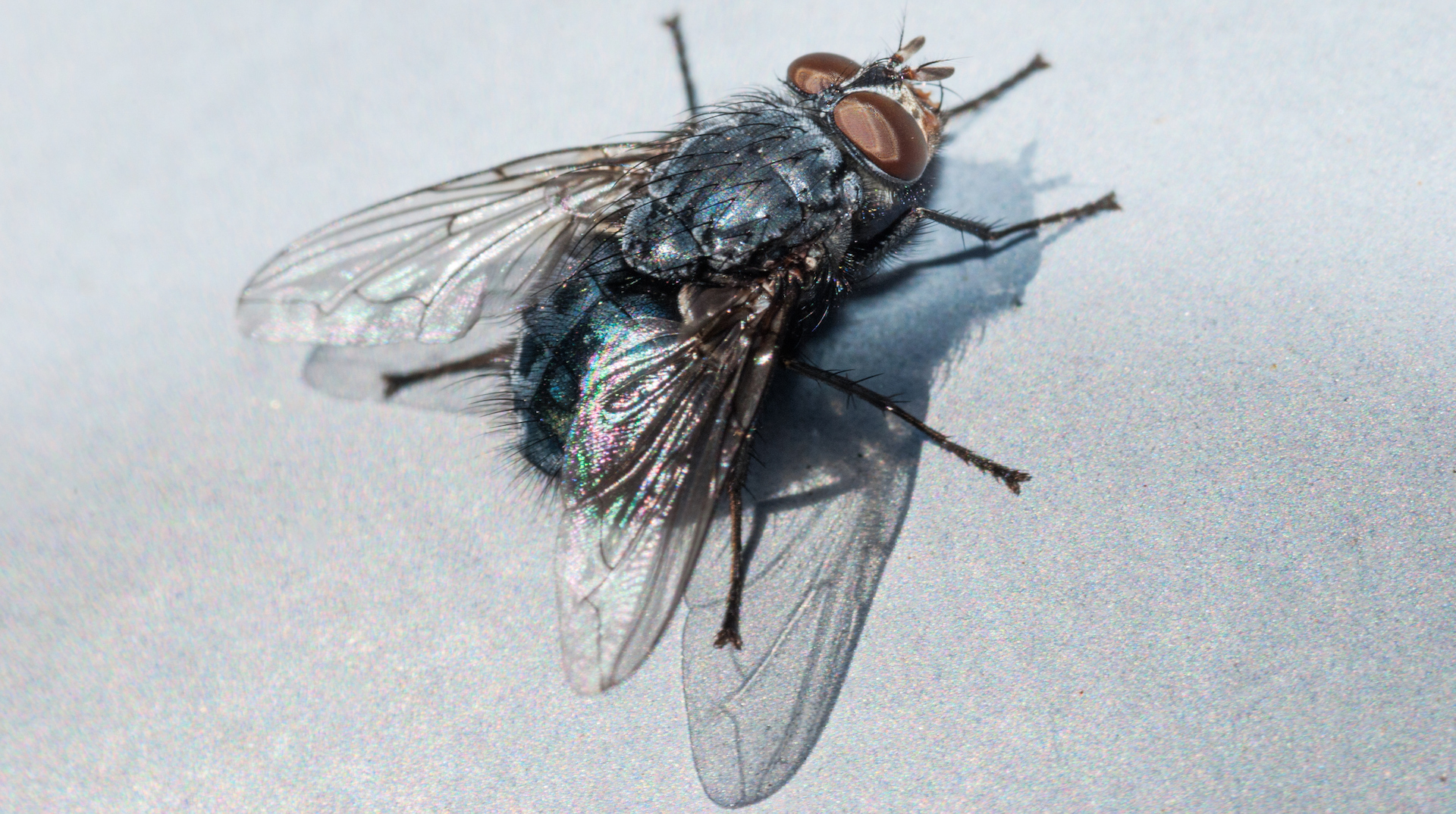
Flystrike – officially termed myiasis – is a serious and potentially deadly condition. It occurs when flies lay their eggs on the rabbit – typically on dirty or injured skin – which rapidly hatch into maggots, which burrow down to feed on the tissues. This is intensely traumatic and painful; it may cause the rabbit to scream. The maggots also release toxins which can cause shock.
Any sign of maggots on your rabbit is an emergency. The best plan is never to let it happen in the first place. Good hygiene is essential, both in the rabbit’s living area and on the animal itself.
8. Wet dewlap
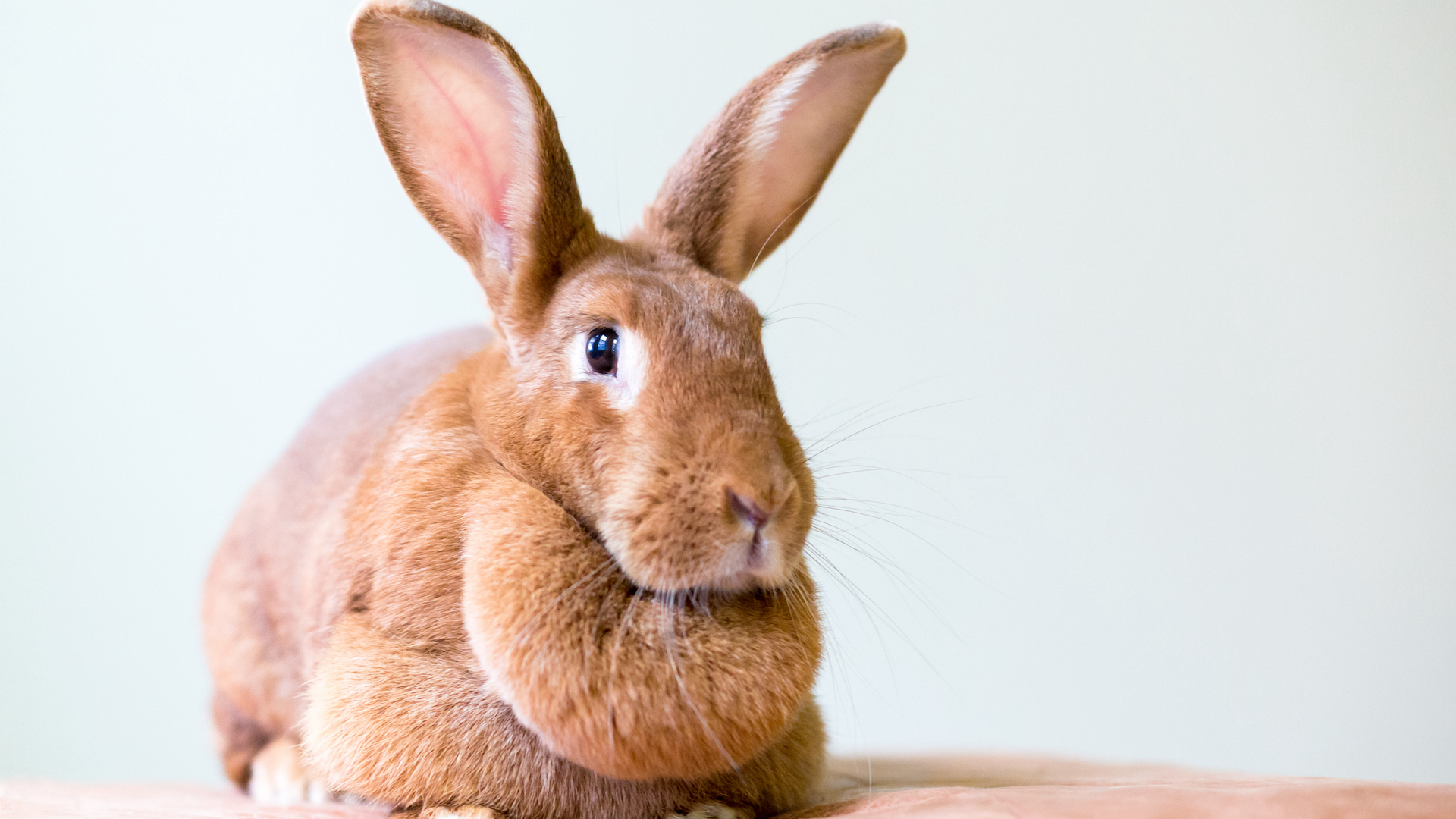
Also known as moist dermatitis, this affects the heavy fold of skin on the front of female rabbits. When some rabbits drink, they can spill water onto this dewlap, which becomes soggy and inflamed. It can deteriorate into an infection – and even an invitation for flies to lay eggs, causing flystrike.
9. GI stasis
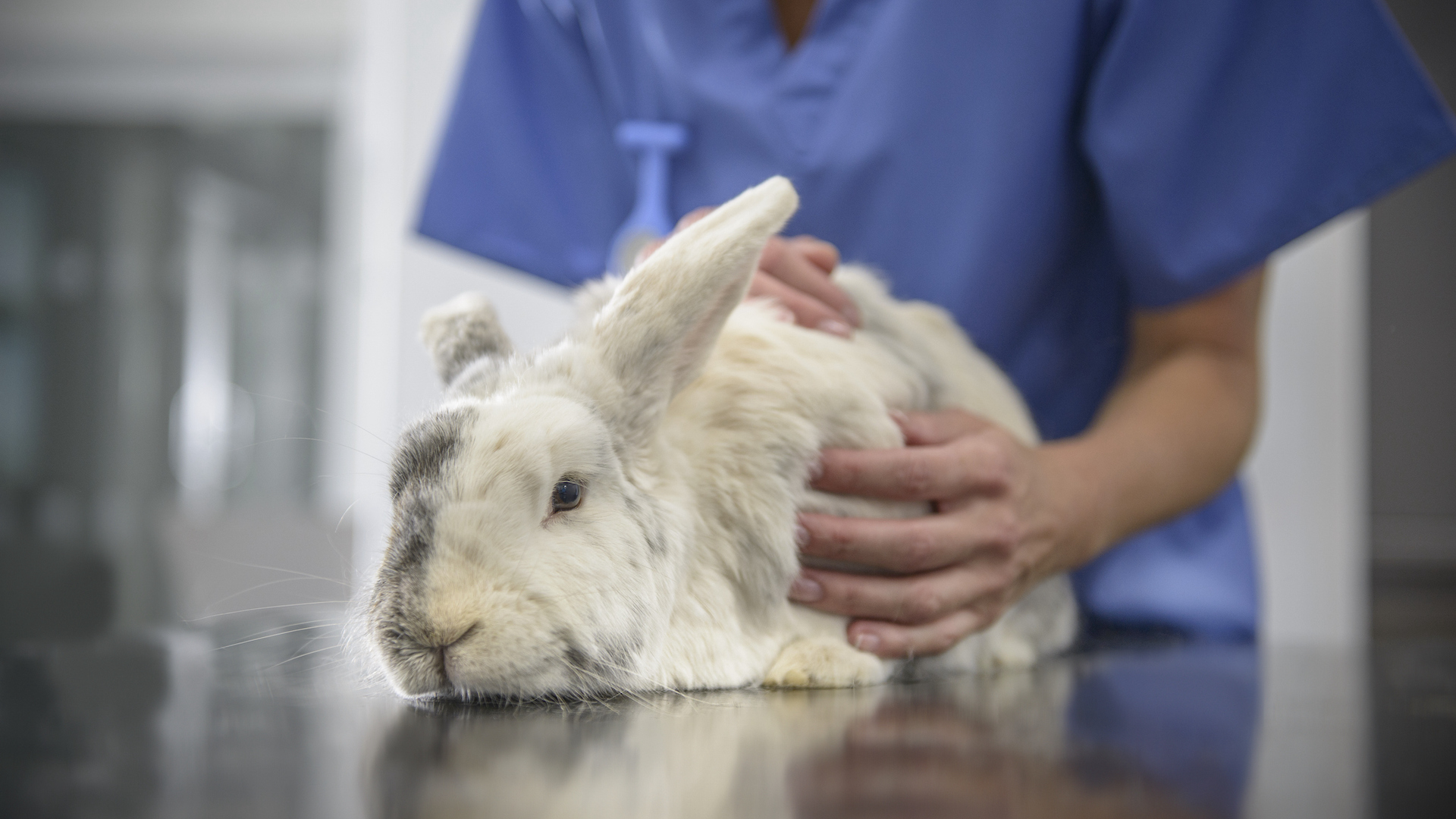
GI (gastrointestinal) stasis is when the passage of food through the gut slows down, which makes gas-producing bacteria multiply, causing bloating, constipation, discomfort, and loss of appetite. While not as much of an emergency as a hairball blocking the gut, it can still be life-threatening if left untreated to get the GI tract moving again.
10. Mites

There are several types of mites that are common in rabbits: ear mites, fur mites, and mange mites.
Ear mites are parasites irritating the lining of the ear, which can cause infection and related problems such as head tilt. If you spot a crusty inner ear with tiny bugs, it’s definitely time to take action.
Fur mites live on the skin, and do not burrow down into the tissue. They look more like dandruff and do not tend to cause more than mild irritation unless the rabbit is already compromised. This can be treated with a simple permethrin powder.
Mange mites, which burrow into the skin and lay eggs causing sarcoptic mange (pictured), are rare in rabbits, however, they cause severe itchiness and are difficult to eradicate.
11. Encephalitozoonosis

A common infection is caused by parasites which is common in rabbits. It results in kidney disease as well as affecting the brain, provoking seizures, tremors, and other neurological symptoms. If treated promptly it can be cured, but once the clinical signs are severe it can be fatal.
It spreads via infected urine, or to the fetus from the mother in the womb. Good hygiene is key for prevention.
12. Coccidiosis

A common parasitic disease, which has two forms: hepatic (liver) and intestinal coccidiosis. Both illnesses are transmitted by water or food contaminated with the Eimeria protozoa. The hepatic version is usually mild, affecting young rabbits. They typically have no appetite and fail to gain weight. Occasionally it can be fatal.
Intestinal coccidiosis is also a mild disease, often with no clinical symptoms. Good hygiene is essential for keeping the infection at bay.
13. Enterotoxemia

This severe diarrhea develops very quickly, typically in young rabbits up to eight weeks old, but can affect older ones less commonly. Sadly, it normally ends fatally within a couple of days. A rabbit can go from seemingly healthy to dead overnight. It is caused by bacteria, but not that much is known about how it spreads, although it is believed that the disease is less prevalent when rabbits are fed high-fiber diets.
14. Tyzzer disease

A bacterial disease causing a lot of watery diarrhea. It usually results in death within three days, with nine out of 10 infected rabbits likely to succumb, and those that survive are compromised. The infection spreads via contaminated food or droppings, and poor hygiene and stress are considered contributing factors.
15. Colibacillosis

There are two types of colibacillosis, which is a bacterial disease – E coli – causing diarrhea. Infected baby rabbits up to two weeks old develop yellowish diarrhea, which is nearly always fatal. Weaned rabbits – aged four to six weeks old – tend to develop watery diarrhea. Infected bunnies usually die within five to 14 days, and those that do survive are likely to be stunted.
16. Proliferative enteropathy

Recently weaned rabbits showing signs of diarrhea, depression, and dehydration may be suffering from an infection caused by the Lawsonia intracellularis bacterium, which causes a disease called proliferative enteropathy – proliferative meaning increasing; enteropathy being an intestinal disease. However, unlike many bacteria-causing diarrhea diseases, this one is not usually fatal unless the rabbit’s immune system is already compromised.
17. Mucoid enteritis

This disease causes intestinal inflammation with excess mucus, which is present in the rabbit’s resulting diarrhea. The exact cause is not known but it is believed that stress, dietary changes, insufficient fiber, and other intestinal problems are factors. If you spot slippery diarrhea or mucus-covered droppings, a bloated stomach, and general sickness in your rabbit, consult your vet immediately as this can be fatal.
18. Rotavirus

This virus is usually caused by rabbits eating infected droppings and causes diarrhea. Rotavirus alone is not typically a fatal disease but it is often accompanied by other intestinal illnesses which combine to be deadly.
19. Heat stroke

Rabbits – particularly if pregnant – cannot deal well with temperatures once they climb over 80ºF, especially if their living areas are poorly ventilated. Always provide plenty of shade, fresh air, and free access to cool water. If it does get too hot outside, bring the rabbit indoors to keep cool or they may have a heart attack.
You can spot the signs – hot bunnies will stretch out to maximize their surface area and breathe fast. Gently spray them with cool water, place them near a fan, and consult your vet.
20. Tapeworm, roundworm and pinworm

Compared to dogs and cats, rabbits are not as susceptible to worm infestations, and so regular worming treatments are not essential. Tapeworms and roundworms are fairly rare. While tapeworms don’t really present noticeable symptoms as the rabbit is simply an intermediate host, roundworms can affect the rabbit’s nervous system.
The worm that more commonly affects rabbits is pinworm, which they can contract by eating the droppings of an infected rabbit. Pinworms can then live in the rabbit’s large intestine without presenting severe symptoms, although there may be itching and inflammation at their rear end. Luckily there are effective treatments.
21. Ringworm

Ringworm is not in fact a worm but a fungal infection that is common in rabbits. Look out for patches of bald skin, which may be flakey and look inflamed. It is contagious and is often associated with poor hygiene. Ringworm can spread to humans, so get those rubber gloves and pet-friendly disinfectant out!
22. Sore hocks

The medical term for sore hocks is ulcerative pododermatitis – which essentially means broken skin and inflammation of the feet. The hock in the rabbit is the back of the hind leg, like the human heel. This area can become inflamed and sore due to trauma (from stamping or standing on wire cages) and the skin then becomes infected. Urine in the cage can exacerbate the issue, and there is a genetic disposition in some of the heavier breeds, such as the rex and Flemish giant.
23. Corneal ulceration
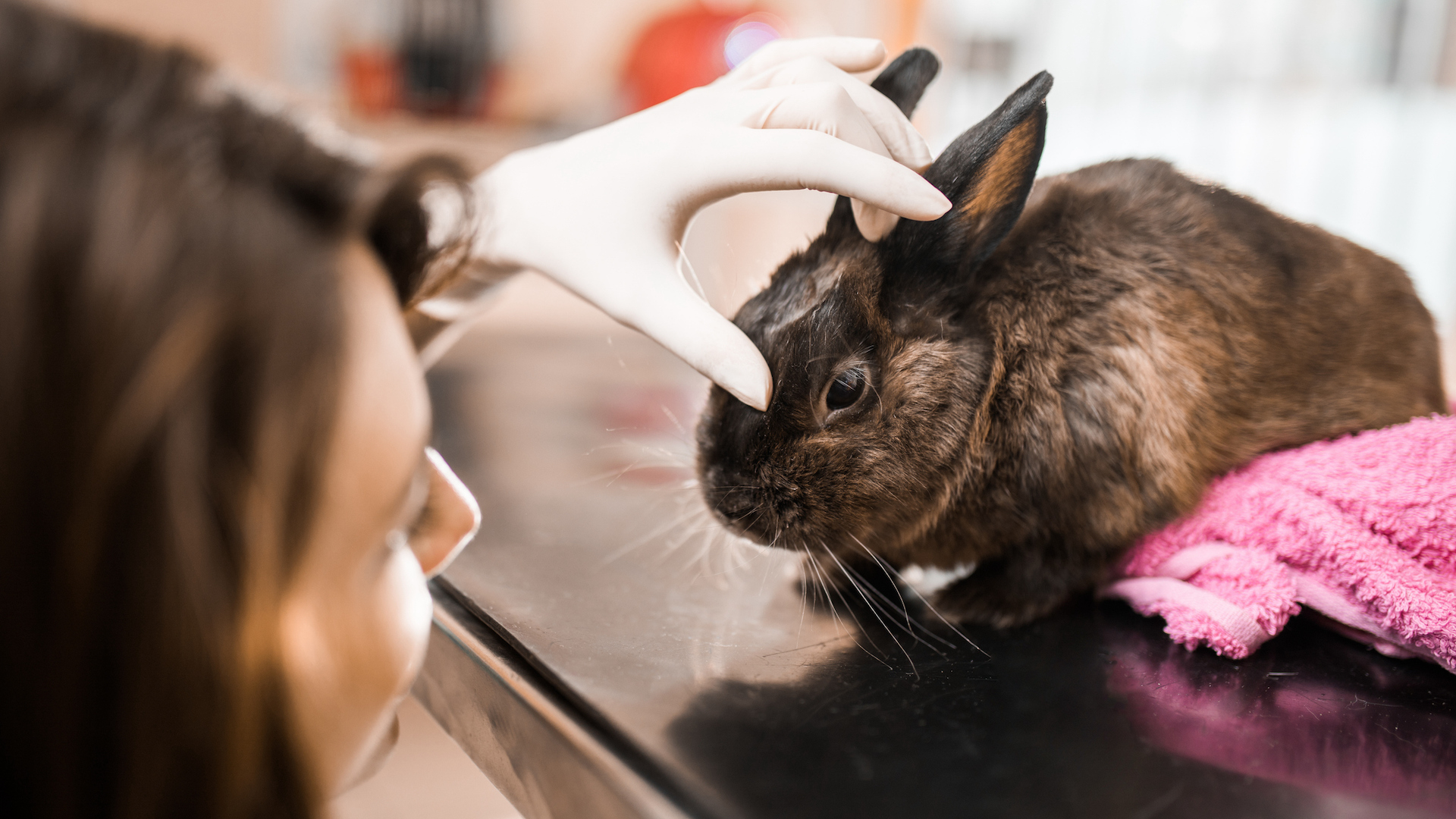
An ulcer on the eyeball – corneal ulceration – is the most common ocular issue in rabbits due to their large eyes and minimal blinking, which means the eye dries out quickly.
24. Conjunctivitis

Conjunctivitis is when the tissue around the eye becomes inflamed, causing redness and the eyes to leak fluid. It can be caused by bacteria or dust and is likely to get worse without treatment.
25. Otitis media and interna

Both middle and inner ear infections are caused by bacteria. This may cause the rabbit to suffer head tilt, as their balance is affected by the infection. Bunnies may become dizzy, or disorientated; you may notice swelling, itching, or irritation in the ear canal. Ear infections can usually be treated with antibiotics.
26. Splay leg

As the name implies, splay leg is when a rabbit’s legs stick out at odd angles, which affects their ability to walk. It is thought to be a genetic condition, and is usually treated with splints, bandaging or even an operation, to try to restore a normal gait.
27. Pasteurellosis
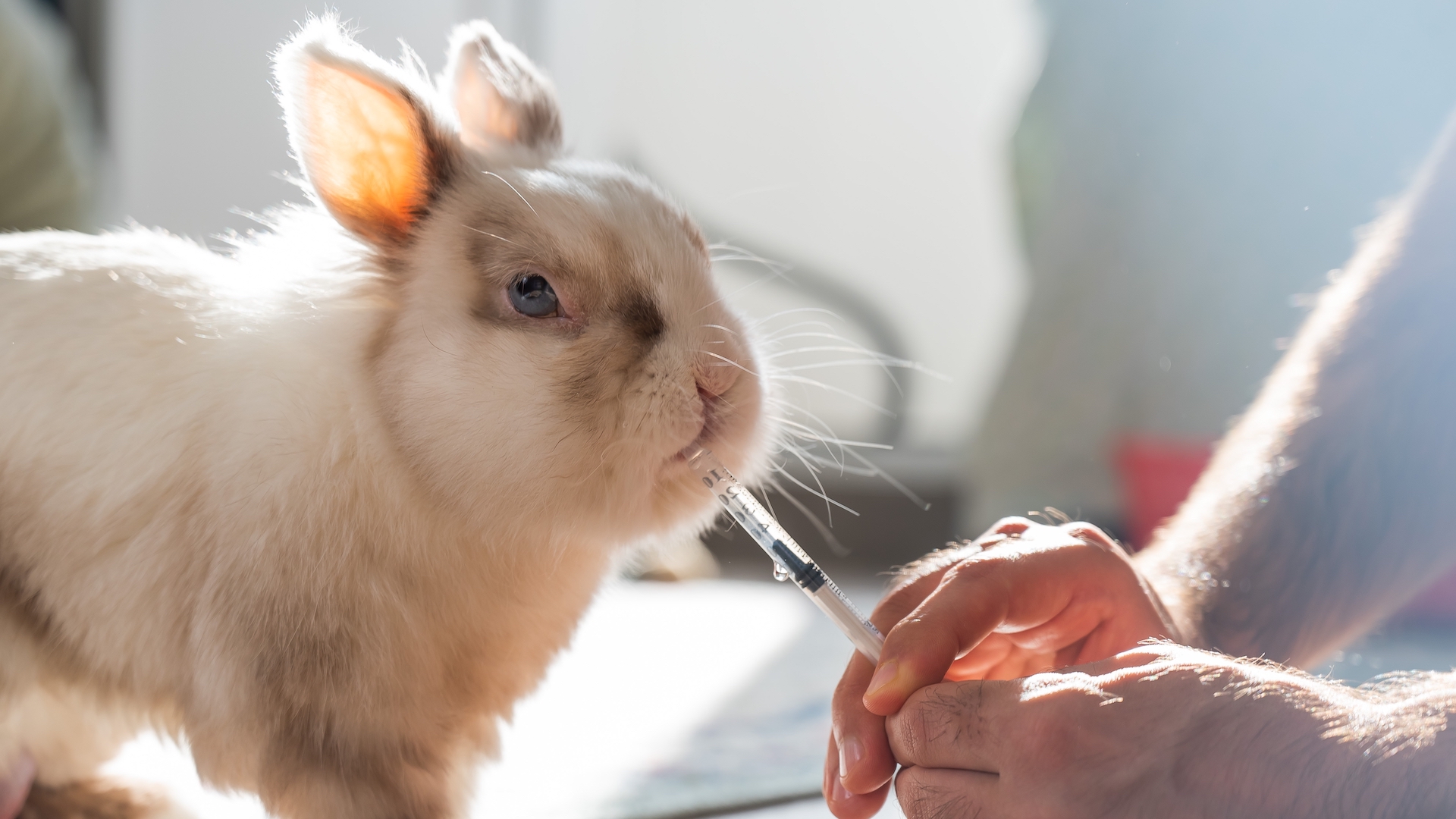
This highly contagious bacterial infection is common in pet rabbits, many of whom carry the disease without showing symptoms. It typically causes a runny nose, pneumonia, sores and sometimes blood or reproductive tract infections.
28. Pneumonia

This common rabbit illness is often the result of a Pasteurella bacterial infection, causing inflammation in the lungs. Rabbits will usually have a fever, inappetence, and lethargy, and will require antibiotics.
29. Ketosis (pregnancy toxemia)

Mercifully this disorder is rare, but it can kill pregnant rabbits within days of giving birth, particularly if they are expecting their first litter. It occurs when the doe is not getting sufficient nutrition for her needs, so the body starts mobilizing the fat stores which build up into a toxic state. It is a rapid-onset disease and is often fatal. Obesity and poor diets are contributing factors.
30. Rabbit syphilis
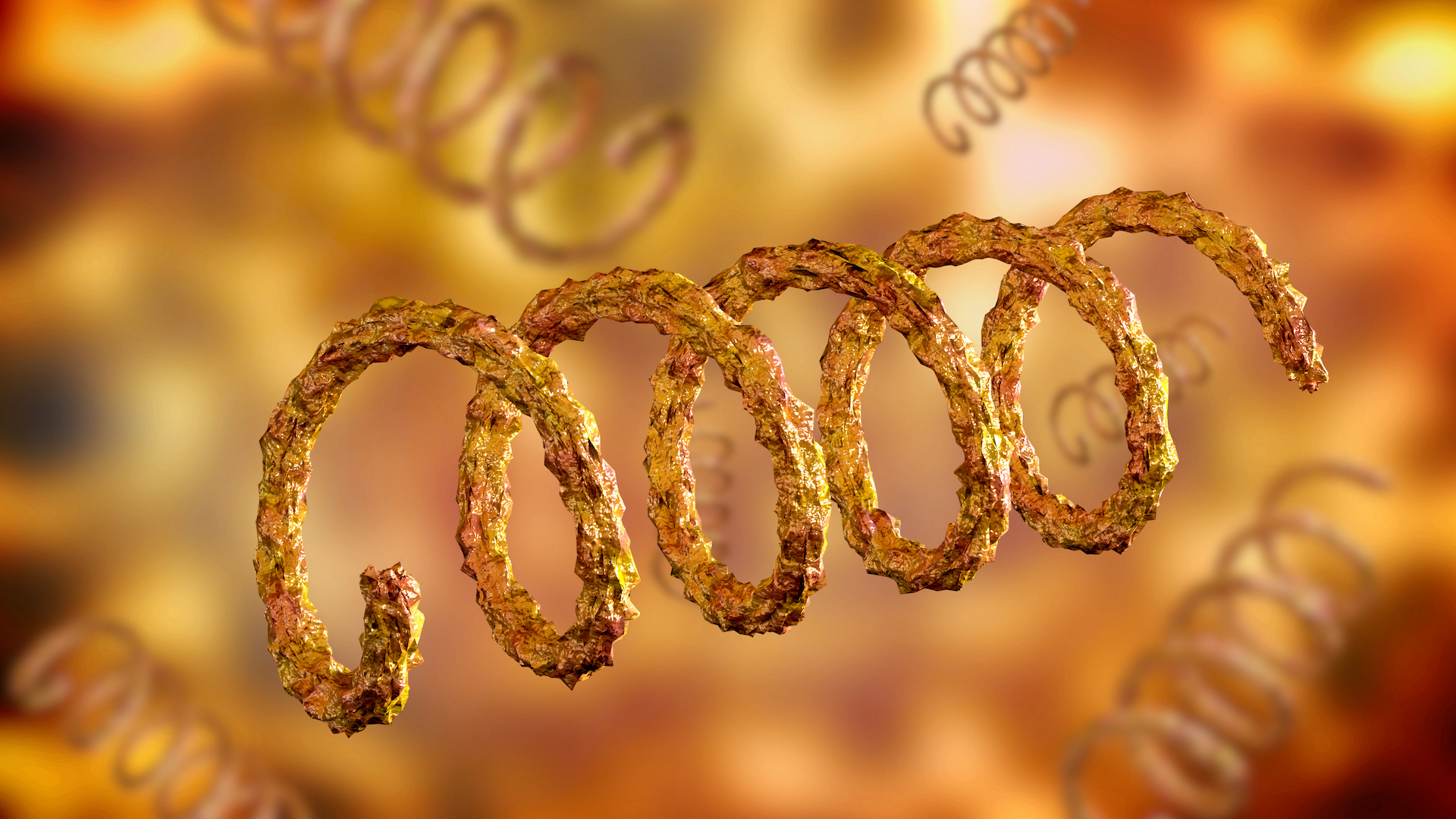
Also known as vent disease and treponematosis, this is a contagious venereal disease transmitted via intercourse or from the doe to her litter. Rabbits will show blisters and sores which scab over, usually in the genital area, and also the eyes and lips.
31. Mastitis

This inflammation of the mammary glands is fairly rare in pet rabbits, but affects nursing does. Also known as “blue breasts”, this is a bacterial disease causing the glands to become hot, red, and swollen, typically with a fever. Key signs are the doe refusing to eat, fever, and the breast will be hot, and swollen and may have a bloody or foul-smelling discharge.
32. Hutch burn

Hutch burn is when the genital and anal region becomes inflamed, sore, and subsequently infected. It is due to wet and dirty cages, or rabbits who constantly dribble pee. Impeccable hygiene is essential.







